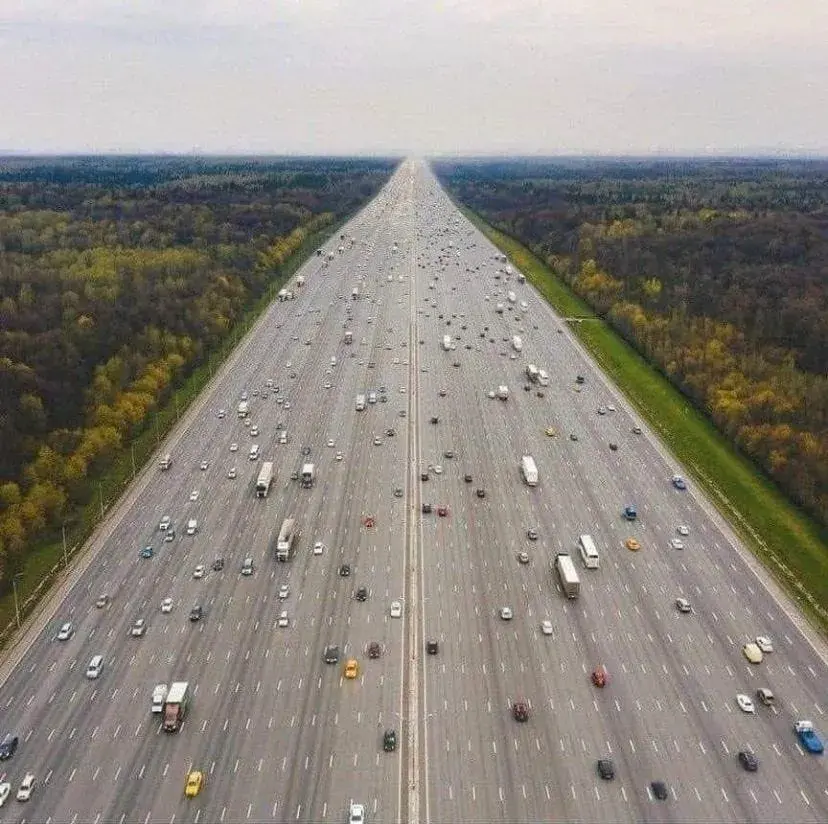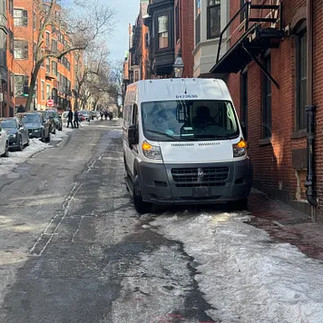Move Boston – Transit Policy Proposal
- Alex Alex
- May 6
- 15 min read
Updated: May 18
How much more time do you want waste complaining about Boston traffic?
Cars, bikes, and scooters customized to make noise have taken over Boston. Their drivers speed and rev engines at all hours of the day. I have spent many nights up until 1, 3, 5 am, listening to insecure men being nuisances for attention. And trailing ten minutes behind them are piercing police sirens.
This winter, as I crossed Columbia Road–the white stickman affirming I had the right of way– a driver surged forward, missing me by a second. He just had to turn right at a red. Obviously I shouted at him:
“What is wrong with you?! I have the light”
His response?
“What did you say!! You want me to light you up???”
“Yeah, go ahead, shoot me because you were wrong”.
How have we allowed this to continue? Why are we ok with our spaces being taken over by cars in ways that encourage and shield these people. Are you not concerned with the disregard for life, pedestrians or motorists, these vehicles spread?
I cycle Boston on a daily basis. I commute four miles each way, go on longer 20, 30 mile loops around the city, and have even biked the 130 miles from Boston to Ptown in a day.
Before the bike, I grew up taking the T and walking all over the city. All this to say, I have built a detailed and lived map of the city and its streets. I know where conflict arises and how it spreads. I’ve filmed hours of dangerous, stupid, inconsiderate road behaviors. In MA alone I have been seriously hit by 2 cars, with dozens of other “minor” confrontations.
Where are the cops (they are sitting on their phones in cruisers parked in bike lanes, bus lanes, crosswalks, on sidewalks —I’ve filmed it)?
Traffic and transit problems are beyond actionable; the solutions come in many versions of long term and problem specific strategies. Many of these policies arise from research conducted by the City, and plenty are already implemented all around the world.
Congestion pricing on suburban vehicles. Revenue generated will go to improving city infrastructure and T/Commuter Rail projects
loudest, heaviest, biggest pay more. Encourage drivers to take the T or commuter rail in
exemptions for trades people or Boston business owners. not a license to violate traffic laws
delivery trucks exempted if they arrive within the following windows
before 7 am
11 am - 2 pm
after 7 pm on days with no large events
towns can collectively negotiate out of congestion pricing if
they support mixed-use zoning development, high density housing around commuter rail stations
they commit to working with city and state to build out rail infrastructure, increasing frequency efficiency and punctuality
they make honest binding commitments to counteracting NIMBY’s in favor of cooperative development
Traffic law enforcement.
cars should not be double parking, in bike/bus lanes, on sidewalks, blocking crosswalks/intersections, or generally driving erratically.
the City could generate tens of thousands in daily revenue if the "public safety" budget of nearly 800,000,000 actually did its job
exponential increases for subsequent violations. If price is too high, can be worked off with sweat equity by identifying other traffic violations.
Bus corridors
grid of dedicated, continuous bus corridors crisscrossing the city
the corridors will double as EMS routes for faster responses
linking priority spaces like schools, museums, parks, hospitals, and recreation districts
Raised crosswalks; expanded bike corridors; accessibility audits of pedestrian infrastructure; parking garages on city outskirts
Police force
Bike division
guarding children biking to and from school
main traffic enforcement arm
Motorcycle division
tagging flagrant violations, tailing safety risk vehicles, directing traffic in high conflict zones
Mayor Wu, I find the work of your admin and team to generally trend in the positive direction, but you lack the follow through and urgency on many issues; so as the saying goes: commit or get off the pot.
Framing the Problem with Boston Traffic
Despite campaigning on improving streets and public transit, Mayor Wu has conceded to entitled motorists and the auto lobby, and removed the pitiful showing of bus lanes. When bus service replaced segments of the T undergoing repair/improvement, were these busses given priority or their own lane?
No, riders were forced into the dysfunction cars cause.
Over the course of a week of commutes to one of my part-time jobs in Beacon Hill, I saw the removal of three blocks of “bus lane” on Boylston St.
Mr. Kraft, at an event announcing his candidacy, asserted that Boston’s streets are congested because of hastily conceived and implemented bike/bus lanes.
Lets take a look at a video I recorded on Boylston St after the removal of the bus strips that do not deserve the title of “bus lane”.
Seems to me like the problems aren’t the bikes or busses, but the obstinate, stupid insistence that tax-payers publicly subsidize auto industries. In this two minute clip, you can see 15 vehicles flagrantly violating basic traffic laws, parking in what are supposed to be lanes of motion. There are dozens of open parking spaces available but walking more than 10 steps is a hate crime against drivers.
I have seen a single cop clear this lane, and he too parked in the lane of traffic. Literally the moment he left, the street filled back up again.
My new traffic congestion plan would include a flat $50 fine for the first three traffic violations (blocking crosswalks, bike lanes, parked on sidewalks, double parked, blocking intersections), with the fine doubling for each subsequent infraction. My approach to services like Amazon and Uber is further detailed below.
At $50 each, in this clip alone, the city could’ve generated $750 in revenue in less than 2 minutes. You know this is not the extent of the law breaking that happens continuously, all over the city, at all hours, on a daily basis.
What is the purpose of this doubling scheme? A $50 fine is not felt the same by someone who makes six, seven figures a year as a person who works multiple barely minimum wage jobs. This doubling effect ensures that no one thinks their wealth exempts them from the law.
When the fines get too big, drivers have a second option to repay their debt: document other traffic infractions. The specifics are something to be worked out with communities and city council, but I imagine a corresponding time per penalty, with reductions for every violator they find.
Basic Economics
I will get railed for my age, my inexperience, my naiveté, and poor grasp of economics. So lets perform a basic economic exercise:
The first, and almost only, economic law capitalists/liberals bring up is that of supply and demand.
As supply dwindles or demand increases, price will increase.
As more cars (demand) take up space on the road (supply), the more you will pay, with your time, in taxes, with your health, and with actual money.
Everyone complains endlessly about traffic(you lose 79 hours/year), parking(cheapest estimate: $900/year), gas prices(~$2,500/year), insurance costs($2,149/year), road repairs(well over hundreds of millions, impossible to find exact figures for the city), Masshole drivers, and on and on and on . . .
The industries and people who benefit from these insane expenditures are what I mean when I refer to the “auto lobby”.
The more people that fill the roads, sitting one per 3,000 lb vehicle, the less parking spaces available, the higher the local price of gas, the more time you spend in the misery of traffic, the more you are taxed to maintain roads handling wear from these vehicles.
I know you may not see the state of road conditions from your boxed-in cars, but I feel every pothole, wear, and deficiency. Do you know why this happens? Because thousands —if not millions— of 3,000 lb vehicles driving over roads day-in and day-out creates mechanical stress that cannot be avoided. You know what it takes to repair these roads? More taxes. And yet car drivers are the first to whine about the out-of-control taxes.
As supply increases or demand decreases, so too will the price decrease.
As more people opt for improved transit and bikes, the less traffic you as a driver will have to deal with, the less time you spend driving, the easier it is to find parking. Increased transit and bike infrastructure is a win for everybody who has a basic grasp of economics.
The Law of Diminishing Marginal Utility
This law states that for every additional unit of X, the utility or value derived from X decreases. In the context of city road usage, any additional road space or accommodations made for a saturated car ecosystem will provide negligible value.
What does this look like in real terms? It looks like a perpetual congestion problem even after governments like those in Texas or California spend hundreds of millions to widen freeways that are already 5+ lanes wide.
Mass DCR is currently trying to build a 6 lane highway in Brighton off the river. How many more studies need to be done before we listen to common sense?
On my commutes, I pass hundreds of vehicles jerking through traffic, even though I am barely pulling 14 miles an hour. Giving space to under-served cyclists and transit will generate more utility than giving that same space to cars. Most streets already have 2 rows of on street parking, but no one ever seems to complain that they should be turned into lanes of traffic.
The Human Cost
In the USA, we sacrifice 45,000 people every year to auto related incidents —all for the privilege of funding auto industry executives (manufacturers, gas and oil, metal mining and refining, insurance, construction).
September 2024, 62 year old John Corcoran, while cycling in Cambridge, on a section of bike lane raised up to the sidewalk, was struck by a driver. He later died of his injuries. It was not until March that prosecutors began the process of filing charges against the reckless motorist.
March 24, 2024, 4 year old Gracie Gancheva was struck and killed by a pickup truck in the Seaport District.
Mr. Kraft, how can you claim to be a candidate for the interests and wellbeing of families and children while opposing safer streets and bike infrastructure. Mayor Wu, what is the delay in implementing the findings of the hundreds of studies that come to the same conclusions?
Everyone complains about kids’ lack of activity, about the amount of time they spend indoors on screens, about their lack of socialization, about their complete dependency on their parents.
How can you fault kids for being this way when our physical and social infrastructure gives them no other options? Older generations love to talk about how they were wild children, not coming home until the sun set. But rather than fight to return this freedom to children, they selfishly turn the city and its neighborhoods into minefields.
I am a daily cyclist and yet, if I had kids, I would not let them bike around the city. I know how dangerous it is. And the parents I talk to agree with me.
Except the danger isn't in the cycling, its in being around cars. Gracie was not a cyclist.
She will never get that chance.
There was an overwhelming sense that this tragedy was nobody’s fault really; it couldn’t have been avoided. Except that blame can be assigned; drivers and corporations must be held accountable. Why have we accepted the enlarging of vehicles to the point that drivers cannot see children over their hood? Why have we let politicians and executives redesign the city to maximize profit at our expense?

In the fifth grade, I snuck away to the Orient Heights Library after school, without my mother’s permission. As I left, I waited to cross the four lanes of Saratoga St separating the library from the Orient Heights T Station. The three furthest lanes stopped to let me pass, but a lady on her phone rounded the corner of the closest lane, sending me over the hood of her car.
She sped off, and while the adults were distracted chasing her down, I ran away into the T. I didn’t want to get in trouble with my mother for sneaking off to the library, or with law enforcement if they found out I was an illegal.
Last year, late February, on my last day as an afterschool teacher in Arlington, I was hit by another car. I was walking across the crosswalk when a driver too busy with a vape pen in his mouth turned left without looking. My left knee smashed into his right headlight and I fell backwards. A positive omen just before my cross country bike trip.
Just a few weeks ago, another driver too impatient to wait for a green light almost hit me while I had a pedestrian signal. Like a good Bostonian, I asked if he was stupid, asserting that I had the light.
He rolled down the window and said “how about I light you up”. Drivers are so entitled they threaten to shoot those they nearly injured —their entitlement is only reinforced by a culture free of consequences.
Alex Alex’s Street, Road, and Transit Plan
I don’t consider a painted strip of road littered with glass a “bike lane”. Bike lanes cannot be called such until a 12 year old can safely ride them on their own to school, to parks, to libraries, to see their friends.
Bike lanes are not just for bikes: I have seen and documented them in use by parents with strollers, people with push carts, and people in mobility aids, because the sidewalks are too uneven and often blocked by vehicles
Basic Bike Lane Principles
Best practices for bike and transit infrastructure
On the inside, the right, of a lane of parked vehicles
current left side bike lanes create conflict when: drivers try to park; drivers are pulling out; drivers open their doors; drivers double park
A single corridor on one side of the street for both directions of bike travel is better than two separate, narrow strips
Bike lanes should be separated by sturdy bollards (bonus for ones that reflect community, bring identity to neighborhoods, are made in partnership with local artists. Some of my favorite ideas are ones depicting the solar system with distance to scale, ones topped with life cycles of various local flora and fauna, ones depicting Boston history)
Bike lanes must be free from debris from damaged cars, or glass from liquor bottles thrown onto streets
Clear signage directing motor-scooters and motor-bikes to general traffic
Proper drainage
Bike and Transit Corridor Network, Doubling as EMS Lanes
Take a look at this video of traffic at the intersection of Mass Ave and Columbia Rd. I captured 2 minutes of the 4 in which a firetruck was stuck behind traffic. I see no bike or bus lanes in sight holding these vehicles up. In fact, had there been a bus or bike lane, EMS could’ve taken it to leap frog the dozens of cars with a single person in them.
I film instances like these all over the city. What are the costs we incur to sustain this model? Why do we resist implementing transit corridors that criss-cross the city, providing comprehensive coverage, reduced mass transit times, and more responsive emergency services?
Boston’s Finest
Part of my plan to make Boston’s streets safer and more efficient involves tapping the police force. A separate policy proposal will go more in depth into my proposed cultural and institutional shifts at BPD, but this snippet here captures its heart.
The police are not the law, above the law, or exempt from it. They must lead by example, and are to be held to the strictest standards, just like all civil servants.
Under my administration, BPD’s authority and peace-keeping will not operate through threat of force, but through model behavior and integration to the communities they serve. In addition to bike units set out to ticket and enforce traffic laws, I will create an elite task force dedicated to ensuring the safety of children biking to school. (Bike units save money on insurance, gas, vehicle repairs, etc., so if you’re for reducing taxes, why would you oppose this low capital investment way of generating revenue?)

This elite bike unit will be comprised only of the most upstanding officers, who pass rigorous background and behavior audits. Officers must be in peak physical condition and demonstrate deep knowledge of the city, its streets, and neighborhoods. These officers are community leaders that put citizens at ease through their demeanor alone.

Additional Elements of my Street Safety and Efficiency Policy
Noise and Human Health
Tricked out cars and motorcycles/scooters endlessly assault our ears. I wake up at 3 in the morning to the sounds of roaring engines. It is constant, at all hours of day and night. Do I really need to bring up studies explaining why interrupting sleep is a bad thing, or why humans and the natural world deserve quiet?
These people are advertising themselves. They need everyone to know of their presence. Put bloated police budgets to good use and send a message that Boston does not tolerate the disrespect of the city and its people.

The traffic enforcement cops dedicated to tracking these vehicles down will not chase after them. Doing so will just put more people in danger. And once one person gets caught, the others will try to hide. I propose a coordinated intelligence gathering period followed by a swift impounding/ticketing period.
Speed Humps
Mayor Wu is trying to lower speeds in the city by installing speed humps. Again, I agree with the underlying logic, but disagree with the execution. Take a look at these curb cuts and crosswalks.


They are flooded and blocked. Hundreds more look just like this when it rains or snows. I am able to walk around or jump over. What about everyone who cannot: people with strollers or kids in tow, people with mobility aids, older people, people with bags, people who don’t want to risk walking into traffic?
Instead of installing speed humps in the middle of streets, I intend to raise crosswalks to street level, and suggest whoever wins this election do the same. This design choice achieves multiple beneficial effects at once.
Crosswalks serve as natural end points and consistently placing speed humps at ends of streets will condition drivers to respect even non-raised crosswalks.
The elevation makes it clear to cars that they are in pedestrian space, not the other way around

Fixes the curb cuts that do not align with sidewalks
Eliminates flooded curb cuts
Stops cars from edging lights, stopping in cross walks, and clearly defines the boundaries of the intersection box that they are not allowed to block
Delivery Windows for Commercial Trucks
Another major source of traffic are all the trucks that must unload and deliver the supplies that keep the city functioning. They will be exempt from congestion pricing if they arrive in the following windows (as in come, unload, and leave before window expires)
Early morning deliveries: Finish by 7:30 am.
Afternoon deliveries: 11 am - 2 pm.
Night deliveries: Anytime after 7 pm, unless significant night events are scheduled.
Delivery Services: Amazon, Uber, Lyft etc
I support the Mayor’s current initiatives to make these companies apply for permits with increased reporting and data sharing. My proposals are complementary, focused more on the physical use of city space.
Individual drivers will be fined as individuals, even if they are on the clock. For example, an Uber Eats driver double parked while grabbing food would add to their own personal tally.
However, each driver associated with these companies will contribute to a singular running total. The exact details of the fine structure requires more data collection at a scale I am not capable of performing on my own. However, just like individual drivers can reduce their fines if they identify other violations, companies can reduce their fines for compliance with traffic laws and adherence to the permitting structure the Mayor is currently pursuing. Improved worker conditions, compensation, and reasonable quotas on drivers will also result in reductions to their fine total.
The City and private sectors will need to work to create 5-10 min quick load spots on streets, or help businesses dependent on the delivery model create satellites that divert traffic from city centers or congestion zones.
Congestion Pricing: from Boston, Massachusetts, and the Northeast corridor, to National High Speed Rail and Global Partnerships
Boston must implement congestion pricing. Before you let Mr. Kraft whip you into a frenzy, congestion pricing applies to non city residents. If you live in the city, congestion pricing will not apply to you.
The traffic in this video of Mass Ave @ Columbia Rd is almost entirely people trying to get to I-93. Meaning they are not Boston residents. They come in, wear down city roads, and back up traffic for city residents. We sustain and subsidize their suburban lives off of our labor. No, enough is enough. They can drive to T stations on the outskirts or to commuter rails, and ride the trains in.
I filmed this video of Mass Ave on a Sunday, on my way to work. As you can see, dozens of parking spaces that are filled on the weekdays are completely free. Suburbanites coming into the city represent a significant strain on Boston’s infrastructure.
A portion of the revenue generated from congestion pricing will go to developing world class public transit, bike programs, etc. The remaining part will go towards improving T and commuter rail access: lower prices, more frequent punctual trains, and expanded routes.
This effort must be a city-state partnership that the state takes accountability for. Boston, as the economic and cultural heart of Massachusetts, wields great influence. We should use that influence not solely for self gain, but for mutual development across the state under the guiding principles of equity, justice, and community.
As the unqualified, incompetent, self-interested buffoons in DC torpedo global diplomatic relations, the burden for maintaining these international ties will fall to our cities and states. There is so much opportunity in the chaos they cause.
Expanding T (like branching off the Blue line to service Chelsea, Everett, and Revere) and commuter rail services will require a level of efficiency, punctuality, and communal respect we have not yet achieved. But plenty of cities around the world have already done so, demonstrating that projects 10x the magnitude are possible. These infrastructure projects are rife with technical and cultural exchanges with countries like China, Japan, the Netherlands, etc.
These improvements in local rail, centering Boston as a major hub, set strong foundations for a national high speed rail network. We would begin by connecting the Northeast corridor, running a continuous line from Maine through to NYC, Philly, and DC. With the right attitude and leaders, we can open up connections to Canada, reaffirming a longstanding mutual partnership. The current fear surrounding the safety of flying further forces open the door for national high speed rail.
I promise that my day one improvements to city life will lead into attempts to establish Boston as a national and global leader.
***This policy proposal is distinct from my bike, street design, and child cycling proposals. In separate documents I will go over cyclist training/registration, bike busses for BPS, 10min-under parking spots for delivery services, and more comprehensive street design philosophies, like removing parking at the corners of streets to eliminate blind turns***





















Comments